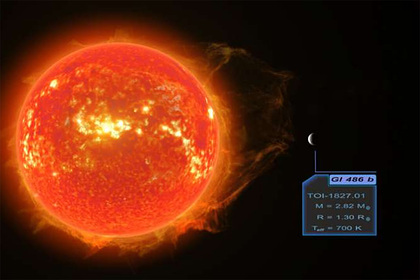
Scientists at the Max Planck Institute for Astronomy in Heidelberg (Germany) have reported the discovery of a hot super-earth in orbit around the red dwarf Gliese 486, which is relatively close to Earth, only 26 light years away. This is discussed in an article published in the journal Science.
The researchers used a combination of transit photometry and spectroscopy and analyzed data from the MuSCAT2 camera on the 1.52-meter Carlos Sánchez telescope in Spain. The discovered exoplanet, named Gliese 486b, has a mass 2.8 times that of Earth and only 30 percent more.
Gliese 486b orbits the local sun every 1.5 days at a distance of 2.5 million kilometers. Despite being close to its star, the planet has probably retained some of its original atmosphere. It is in tidal grip, that is, it is always facing the parent luminary with one side. Its surface on the daytime side is red-hot to 700 Kelvin, which probably makes it similar in terms of conditions to Venus.
According to scientists, if the planet were about a hundred degrees hotter, its entire surface would be covered with lava, and the atmosphere consisted of evaporated rock.

